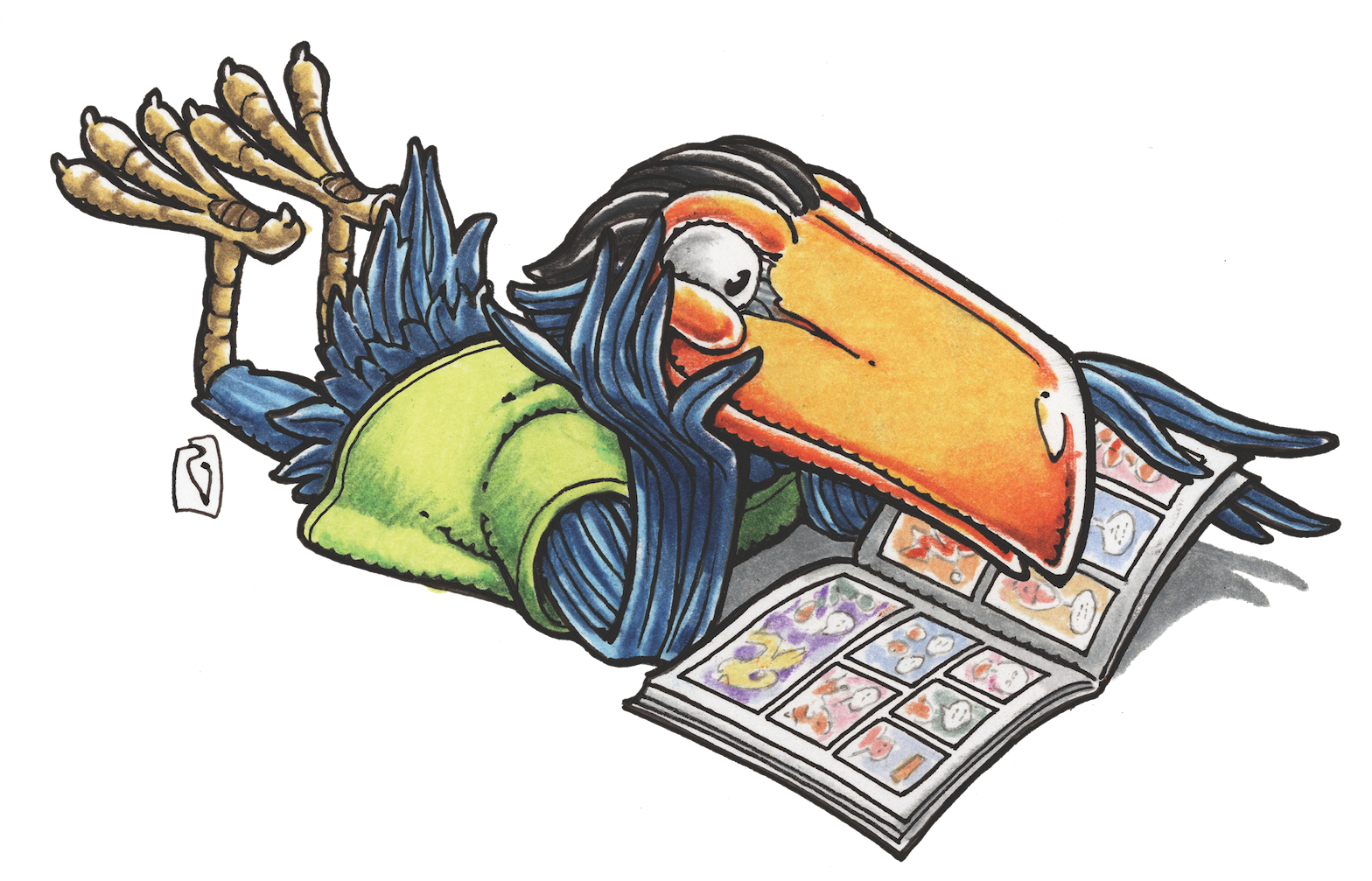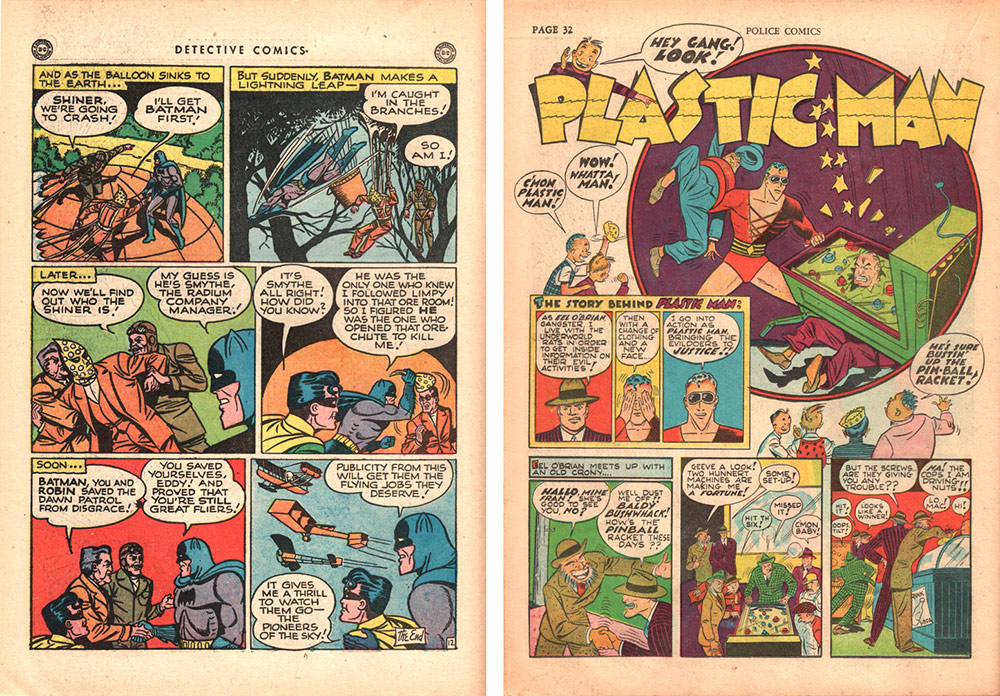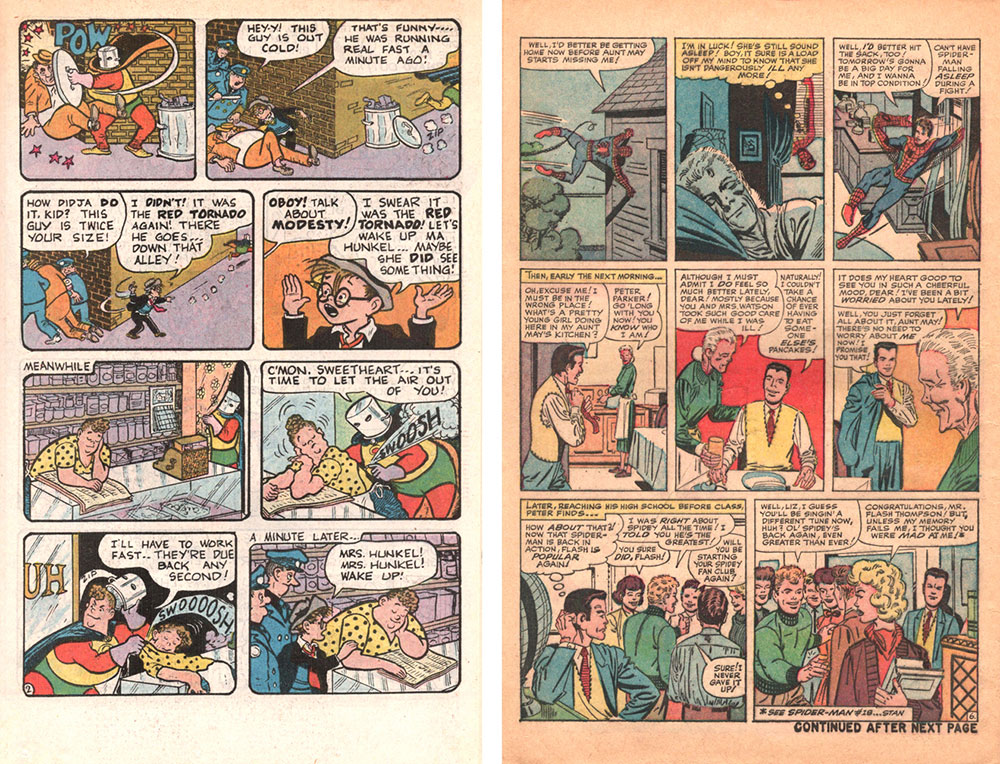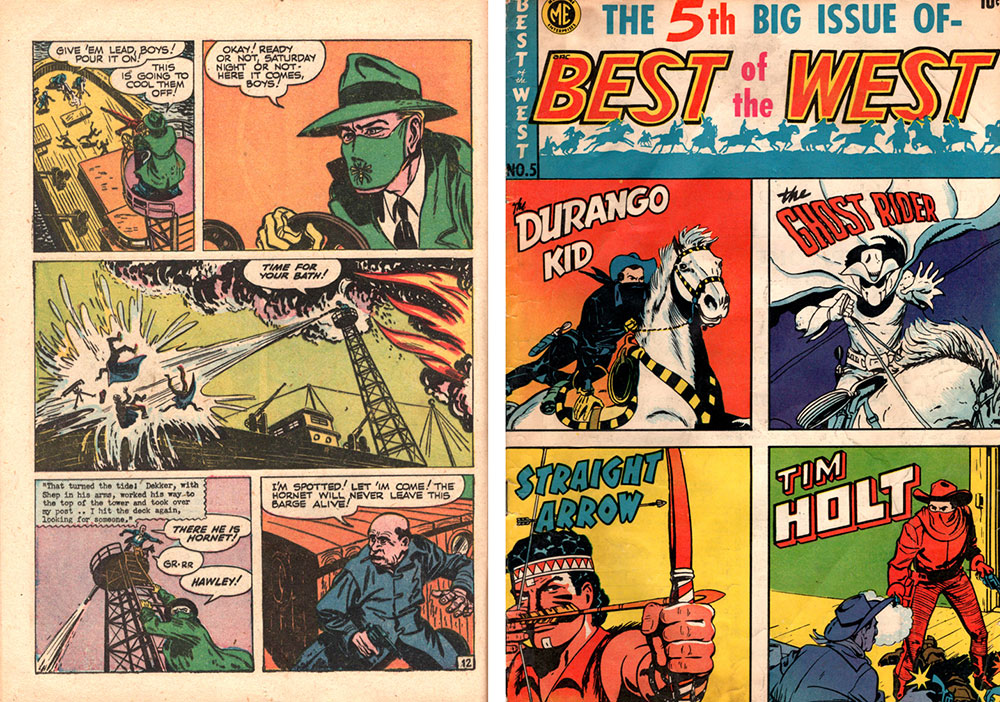MAGGIE’S WORLD BY MAGGIE THOMPSON
Maggie’s World 082: Who Was That Masked Man?

Mask and Cape: That was the title of a fanzine founded by Margaret Gemignani in the early 1960s—and the combo of mask and cape for costumed characters was often a focus in those early days of comics fandom. Comics historian pioneer Jerry Bails, for example, said he was interested in any comics character who wore a mask and/or a cape.
In Maggie’s World #45, the focus was on capes—but that was 2016, and the discussion was limited to questioning whether capes on crime-fighters was a good idea.
However, also in that column, one of the costumes shown was that of Steve Ditko’s The Question, and the page included a brief discussion of “a mask that you can see, breathe and speak through … and yet still look solid!” (Blue Beetle #1, June 1967).
And here we are in 2020, and masks are in the news. A possible option for comics buffs might be using the spirit of costume play as a social positive. Could necessity provide amusement?

Speaking of Spirit …
Let’s face it. When it was introduced in Will Eisner’s newspaper supplement on June 2, 1940, Denny Colt’s domino mask (a) didn’t disguise him all that much and (b) wouldn’t have kept his breath to himself.
Domino masks were in the fine tradition of Zorro (1919), Lone Ranger (1933), Green Lantern (1940), and Robin (1940)—maintained by Teenage Mutant Ninja Turtles (1984) decades later.
And, given just how little it should have kept identities secret, what was up with Plastic Man (1941) bothering with it, anyway? Was he wearing the mask as a mask or as goggles to protect his stretchy eyes? But I digress.
More Than a Domino But …
If you plan to cosplay as a comics character to keep things jolly while you’re out and about, you can forget about fancy-schmancy headgear that leaves nose and mouth exposed to the elements.
Many famous costumes focus more on adding cover to a bad haircut than on keeping bad breath to the character him- or herself. Consider the gang that includes The Phantom (1936), Batman (1939), Hawkman and Hawkgirl (1940), Spy Smasher (1940), Catwoman (1940), The Shield (1940), Captain America (1941), The Guardian (1942), Silver Age Flash (1956), Cyclops (1963), Wolverine (1974), and Nexus (1981). And more, more, more.
Mind you, there are a few outfits that look at first glance as though they’d work. But not so fast. For example, the Golden Age Daredevil made his debut in 1940 and revealed in Daredevil #18 (August 1943), “As for the suit, it’s made of porous rubber!” But wups! Though it was a full-body suit, his mouth wasn’t covered.
Yeah, people can enjoy the cosplay of these characters at a convention, but the CDC isn’t going to endorse it.

Over the Top
On the other hand—and going to the extreme—would-be mask-wearers could cosplay characters whose entire head was safely encased. They could opt for Golden Age Sandman (1939), Doctor Fate (1940), Red Tornado (1940), Ghost Rider (1949), Spider-Man (1962), Doctor Doom (1962), Iron Man (1963), Silver Age Daredevil (1964), The Question (1967), Deathstroke (1980), Rorschach (1986), The Mask/Big Head (1987), Deadpool (1991) … And so on.
My favorite? Probably The Red Tornado. Ma Hunkle was created as a takeoff on superheroes and their outfits. On the other hand, a cooking-pot might not be the most comfortable head-covering, after all. In fact, I’m thinking cosplaying any of these characters might leave the wearer pretty sweaty. Maybe those who wear the outfits throughout the day at conventions would have better insights, but …

These Days
Hey, look.
Here we are. Some are opting to wear covering for nose and mouth; some are not. But is there a way to share courtesy to others while having pop culture fun with it all?
Some kids in the 1940s and 1950s just donned bandanas. (What happened to bandanas and kerchiefs, anyway? A few 2020 fashion sites have begun to post essays on styling with those accessories. But I digress again.) They’re not as effective as surgical masks, got it, but they can be of tightly woven cotton with additional filters. Let’s mull:
Some masked heroes began as radio characters, so it was up to movies and comics to depict them. And some distinctive outfits still kept it fairly simple while covering nose and mouth.
As shown in The Shadow Magazine (1931) and Shadow Comics (1940), The Shadow did have a face scarf—but nope. His big ol’ honker was left sticking out. (Heck, why was he wearing that scarf at all?) Close but not quite.
On the other hand, some Western characters in movies and comics did wear customizable bandanas. Action Comics #42 introduced Vigilante in 1941. Charles Starrett appeared with a mask as The Durango Kid in several 1940s movies—and Magazine Enterprises’ The Durango Kid maintained that look starting in 1949.
And it wasn’t just Western characters. How about Bane, starting in Batman: Vengeance of Bane #1 in 1993? Would his be a good social look these days?
I’m thinking the 1936 Green Hornet radio character nailed what we might choose to wear when we’re out and about these days. He started his comics life in 1940 and changed the mask in later years, but many pop-culture folks would recognize the Golden Age take on the character. (There’s even talk of a new film. Given the opportunity to fight crime responsibly, think he might go back to that 1940s look?) In any case, that’s my pick for now. Hmm, where’d I put that green snap brim fedora I bought for last year’s St. Patrick’s Day parade?
That said …
Capes? We’ve had them in comics.
Masks? As noted.
But, hey, how many characters have routinely washed their hands? (Let’s face it: such hygiene is a good idea, no matter what.)
Gloves? Sure. Lots of gloves. All over the place. Heck, Mickey and Minnie Mouse make it clear that even many funny animals wear gloves.
But once the gloves are off? Hand washing doesn’t seem to be much of a comics meme.
Mind you, there have been a few such images in our four-color world. Dell’s initial adaptation of Disney’s Snow White and the Seven Dwarfs (Four Color #382, 1944) included the “step up to the tub” sequence. The cover of M.D. #3 (1955) from E.C. showed an already-masked and gloved doctor at the washbowl. And the photo-cover of Dell’s Dr. Kildare #7 (1963) featured the doctor using a scrub brush on soap bubbles up to his elbow.
What the heck. Feel free to wash your hands before and after you cosplay a costume hero wearing vintage mask, green hat, and gloves.
What entertained us years ago can give us a buzz again.
Maggie’s World by Maggie Thompson appears the first Tuesday of every month on Toucan!